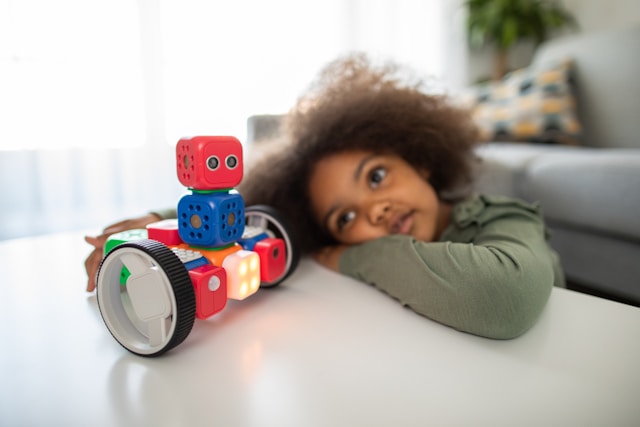Have you dealt with anxiety at any one time?
How was the experience?
Terrible? Right.
There are several forms of anxiety with separation as the most common.
Children with autism are greatly affected by separation anxiety, and it can be difficult to reduce its negative effects for both the parent and the child.
Separation anxiety can occur when leaving your child either to go to work, run errands, or even when dropping them at school. Anxiety manifests itself in several levels of severity. Besides, some children may outgrow it while others require a little help overcoming the emotion.
In our article, we have highlighted some signs of separation anxiety in children with autism. In addition, we have discussed ways in which you can deal with anxiety.
Spare some few minutes and learn.
Separation Anxiety in Autism: Signs
Getting to know signs of separation anxiety may empower you to reach out for help. However, these signs may vary. So, we have discussed some common signs to look out for.
- Refusal or reluctance to go out due to separation fear
- Nightmares every time there is a separation theme
- Reluctance and refusal to sleep away from an attachment figure, or refusal to sleep away from home
- Excess persistence fear being alone or away from an attachment figure at home or in other places
- Excessive recurrent nausea, headache, vomiting, and stomachaches when anticipating separation from an attachment figure
- Persistence worries about loss of attachment figures or possible harm like injury, illness, disaster, or death.
Children with 3 or more of these signs will require structured psychological assistance to work them through their anxiety. As a parent there is so much you can do to help with the process.
Separation Anxiety in Autism: How to Deal with Anxiety
The best cure for separation anxiety is allowing emotional security to develop over time. Emotional security for a child with autism may be difficult to get. But with well-structured habit repetition, and reinforcement it’s achievable.
- Begin with Very Brief Separations
You can think of accompanying your child to therapy sessions, or to school. Remain with him for some time. Then leave h/her with the teacher or therapist to stay away for some time. However, at first if you can stay somewhere he can see you the better, for emotional security.
All this time make sure you are preoccupied, so that he/she can be engaged with the therapist or the teacher. With time increase the class duration and distance. With time you’ll find out that the child can stay for the required time without much problem to an extent of dropping him and picking him later.
- Use positive Language
One of the many reasons children may develop school phobia can be the negative language used by teachers. For instance, imagine when your child asks for you and all the teacher can say is “your mother is gone”, “she left” or something discouraging to the child.
However, there is always a better way to discuss separation positively. First, the teacher can include the expected return time of the caregiver. Like, “your mum will pick you at 10.50 AM, or “your mum will be back after a short time”. Also, it’s advisable to involve comfort with caregiver absence, like “I will stay with you, have fun until it’s time to go home”. If possible, include a picture schedule.
- Say Goodbye with a Smile
Do you know the trick to leave your child/ children seamlessly? Try engaging them or ensure they are about to be engaged, off course in something positive then bid goodbye with a smile. You can also talk to them about what you will be doing while you are away, and give them your expected back time.
- Social & Photo Story
To make social photos and photo stories more meaningful, consider making a picture story with the child photos, alternate caregivers, and school classrooms. You can also plan a visit to the school before the actual school time. With this, he will know exactly what to expect on the first day of school. Social stories work best when well-illustrated, and the photos will perfectly do the work.
- Allow the Child to Walk Away from the Parent
It is interesting how some children prefer to be the ones leaving in a separation situation. They find it better to leave than watch you walk away from them. You can have your child accompany someone else to the shopping center, play outside or leave for school. With time the child will find separation easy to deal with.
- Take Field Trips Together
When you take your child with you for field trips, you increase his or her world knowledge. These trips also help to reduce sensitiveness, and increase awareness of other people’s life experiences and ways of thinking. These skills are very necessary for everyday coping skills.
- Cognitive behavior therapy
Cognitive behavior therapy is a well-organized way to address thought processes and behaviors that are related to anxiety.
- Practice Separation
Practice separation early if your child is learning a new routine, or is about to start school for the first time. This is a great idea to train the child how to stay away from you. In addition, this will make the real separation easier, promote independence and self-sufficiency.
- Leave Without a Fuss
Children copy what their parents do. It’s good to leave and return without making it a big deal. With time, the child will know it’s not something to be anxious about.
In conclusion, if you find yourself struggling with your child’s separation anxiety, be sure to share with your child’s therapy provider and state it’s something you would need assistance. Moreover, your patience is paramount before the child learns to control their emotions.
From the discussion above, we have discussed symptoms of anxiety in children that you can look out for. In addition, we have discussed in depth how to deal with separation anxiety in autistic children.
Further, it’s important to be consistent in the process for better results. It is always important to make the child aware of the world around him and encourage learning of new life skills. Besides, consider long term goals when dealing with separation anxiety.


